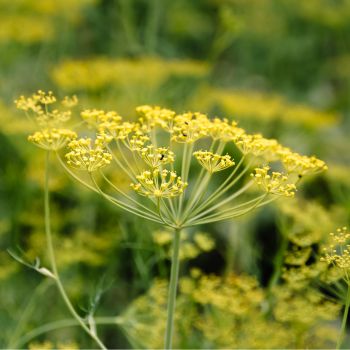Much of a gardener's skill is in bringing order to the exuberant chaos of nature. Knowledge of different plants' qualities and needs is essential for this - but you'll need to know exactly which type of seed or seedling you're dealing with.
The official names given to individual plants are more important than they might seem, and the esoteric-looking Latin found on seed packets and plant labels is at the heart of this.
Common Names v. Botanical Names
Alongside the simple, commonly known name on the front of a seed packet, you'll also find a Latin name which precisely identifies the plant.
This isn't about elitism or willful obscurity. A single plant can be called any number of names in different regions or gardening traditions. It's also not unusual for two completely different plants to share a single common name in neighbouring areas.
But the difficulties don't end there. A generic term such as 'pepper' can include fruits of widely different species within several broader plant families. The spice known as Szechwan pepper is, in reality, a member of the citrus family, and not even closely related to the more familiar black peppercorn. And then there is of course 'chilli peppers'.
There's plenty of room for confusion here. Using botanical names rather than their local common equivalents is an essential way of bringing clarity so that gardeners worldwide can reliably identify a plant and cultivate it properly.
How Are Botanical Names Put Together?
Botanists sort the entire living world into a hierarchy with a tree-like structure. At the higher levels, life is classified according to its place among the kingdoms of animals, fungi, plants, and a few more.
As the branches of the tree spread downward, the classifications go through several other levels mainly of interest to biologists, such as division, class, and order.
However, the two levels which most concern gardeners are the lowest two official rungs, called genus and species. Together, these two classifications create the so-called binomial name or botanical name, leading to the Latin terms you'll recognise for your favourite seeds.
What Are Genus and Species?
The first part of the botanical name represents the broad group that a plant belongs to. For example, the genus Salvia includes over a thousand distinct species of related plants which commonly go by the name of sage. The genus includes decorative varieties, many medicinal and culinary herbs, and even outliers such as chia seed.
The second part of the name narrows this broad group down to a single species, and it usually describes a particular feature of the plant. For example, in Salvia officinalis, the 'officinalis' indicates that the seed has herbal value. In this case it refers to common sage, of the type most widely used for cooking.
Other frequent species names include vulgaris for a common variety, sativa for a cultivated one, argentea for one with silvery leaves, and campanulata for one with a bell-like shape. Once you grow to recognise a few of these Latin terms, you can often take a good guess at a plant's properties just from the botanical name.
How the Names Are Written
By convention, these binomial names are written in italics, with the genus capitalised and the species in lower case. If the same binomial name is used several times, for example in a gardening article, it will usually be written in full the first time, and thereafter with the genus name as an initial. For example, the first Salvia officinalis will then be followed by S. officinalis.
While the genus part of the name can be used on its own to refer to a group of plants, the species name must always be accompanied by its genus. This is because the same species descriptors can be found spread across many separate families. For example, nearly all herb plant genera contain an officinalis or vulgaris member, and often both.
Beyond the Species
However, the naming of a plant or seed doesn't stop there. As any experienced gardener knows, particular species can come in a wide range of varieties or cultivars. Some of these are naturally occurring variants found in different areas, while some are purposefully bred for their individual characteristics.
For natural varieties, the binomial name will be followed by 'var.' and then the Latin variety identifier.
For bred cultivars, the name will follow without the var. but in quotes. The cultivar name isn't written in italics, but is capitalised - for example Salvia officinalis 'Tricolor'.
This cultivar name will usually be descriptive, poetic, or named after a person, but it will always be in a local language rather than Latin. Also, the choice of this name is purely down to the breeder - there is no standardised classification which must be followed.
Species Hybrids
Lastly, sometimes you'll come across seed with an 'x' between the genus and species names. This indicates that the plant is a hybrid of two distinct species. Unfortunately, the name doesn't often give you any idea of which two species have been hybridised, and so in effect you should treat these plants as separate species of their own.
For such a natural activity, gardening can sometimes seem overly complicated and filled with obscure lore. Part of this impression is undoubtedly down to the use of Latin botanical names which can be confusing to a beginner.
However, this really isn't about making things more difficult than they need to be. Botanical names serve a vital purpose. Understanding how they work is an important step toward becoming an accomplished gardener who can handle any unfamiliar seed with ease.






